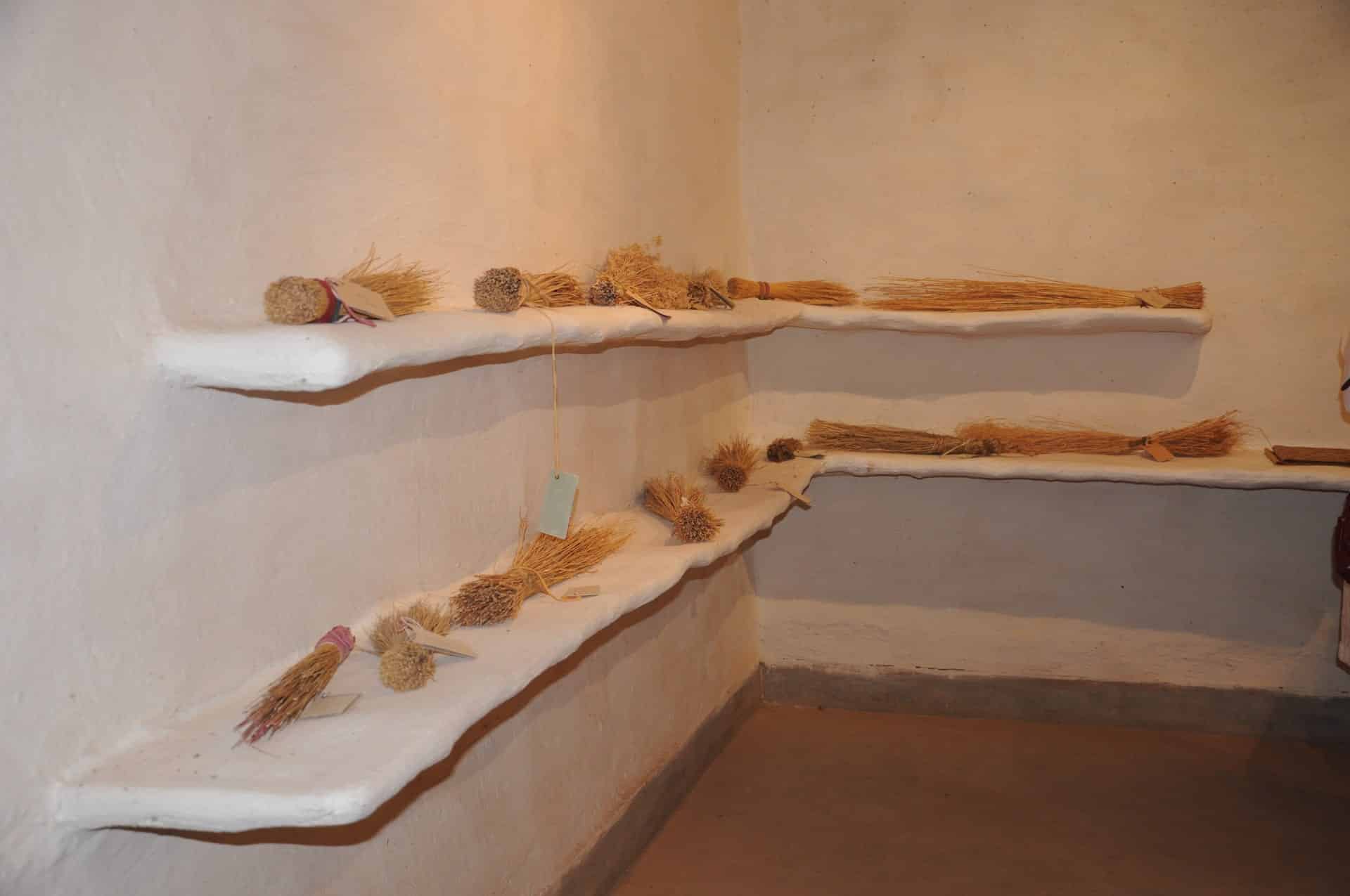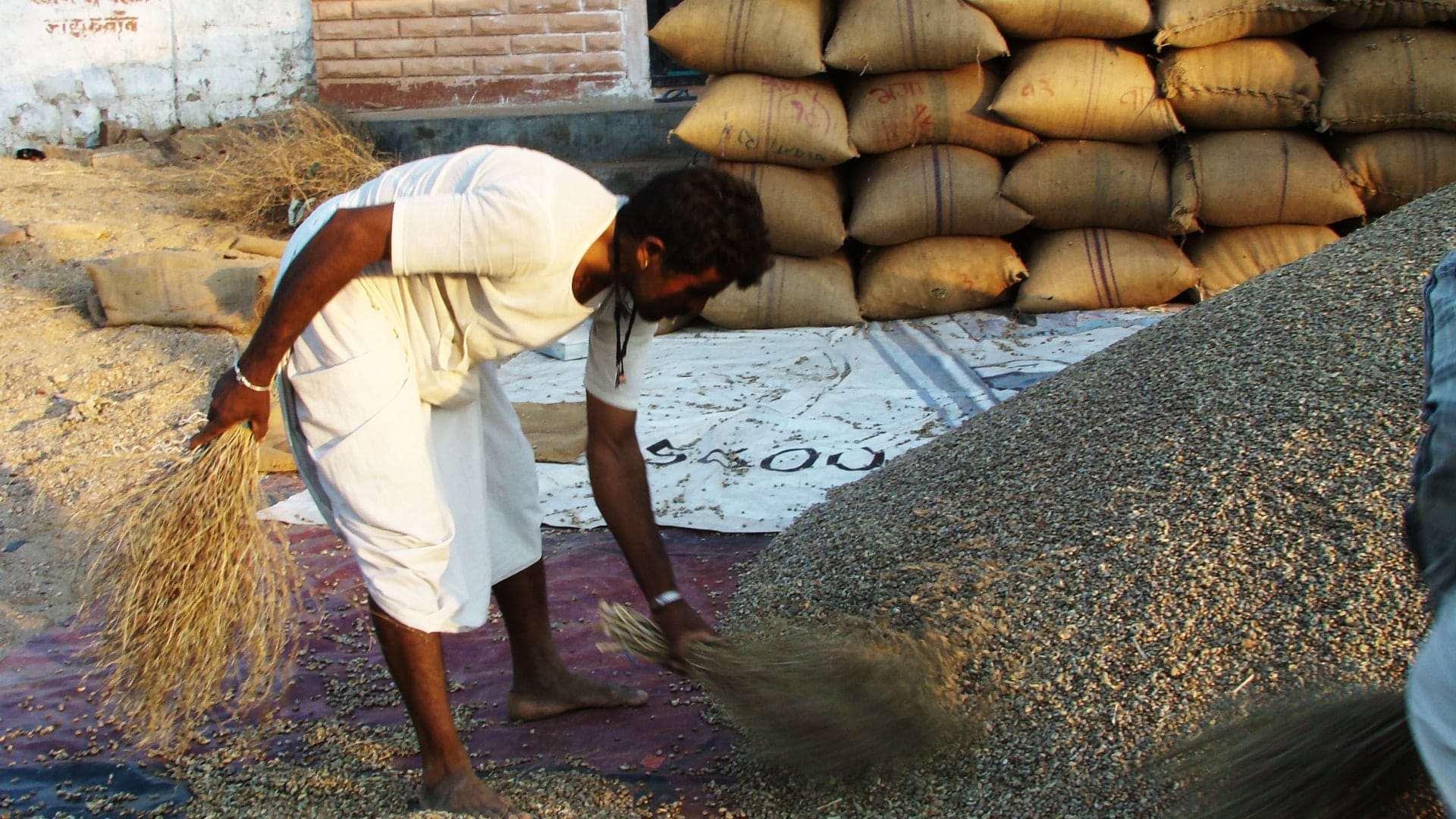An everyday object that reveals extraordinary connections between people, landscapes, and traditional knowledge.
Quiet, modest, and often unnoticed, the broom is a familiar presence in every household. It is not something one would expect to find in a museum – yet it represents an entire world of knowledge, resourcefulness, and human connection to nature.
At Arna-Jharna: The Desert Museum of Rajasthan, the broom becomes more than a cleaning tool. It becomes a symbol – of craftsmanship, ecology, and community life in the desert.
The museum’s broom collection brings together more than a hundred varieties from across Rajasthan. Each broom tells a story – of local materials, ingenious design, and the rhythms of daily life.
Some are made from leaves, grasses, and twigs gathered from the surroundings. Others are crafted by professional broom-making communities and sold in village markets. The diversity is striking – in shape, size, and material – each adapted to specific needs, surfaces, and local traditions.
Rather than focusing on numbers, the collection invites visitors to reflect on how objects of everyday use connect people to the environment – how resourcefulness, labour, and tradition come together in the act of making.


Indoor brooms – called buari or havari in local languages – are made from tender grasses such as panni, daab, and kaas. Used for cleaning clay, stone, or plastered floors, these brooms are treated with care and are never used in courtyards or cattle sheds.
They are often associated with Lakshmi, the goddess of prosperity. In many homes, they are kept carefully under the cot, handled with respect, and never stepped over. The making of these brooms follows ritual rhythms – with certain days considered auspicious, while others, such as Amavasya (no-moon day), are avoided.
Outdoor brooms – known by names such as buaro, baro, or havarno – are sturdier, coarser, and always handmade. They are used in open courtyards, shrines, cattle sheds, and public spaces.
Each one is made from desert grasses, shrubs, and fibres, tied together using traditional string or newer materials like plastic threads or rubber strips. Despite these modern adaptations, the process remains manual and skill-driven – using simple tools and years of practice.

Across Rajasthan, several communities continue to sustain the art of broom-making:
Each community works independently, guided by its own customs and techniques. Yet all share a deep connection to the land and to a form of labour that remains largely unmechanised – a living example of skill passed down through generations.

Broom-making in Rajasthan remains a fully handcrafted process, often involving the entire body. To hold the bundle steady, to twist, pull, and tighten – makers use their toes, teeth, and fingers in perfect rhythm.
Each broom takes only a few minutes to make, but years of practice to perfect. Materials vary, and so do the methods:
Every movement reflects the dexterity, efficiency, and patience of the maker.
Every movement reflects the dexterity, efficiency, and patience of the maker.
The broom is also a reminder of the social and economic realities of those who make it – communities often facing health risks, low income, and limited access to education.
Through the Broom Project, the museum works to connect cultural understanding with questions of livelihood, design, and social development – encouraging dialogue between designers, community members, and citizens about the value of this everyday craft.
In doing so, the broom becomes what it has always been – not just a tool for cleaning, but a symbol of care, order, and the quiet dignity of work.